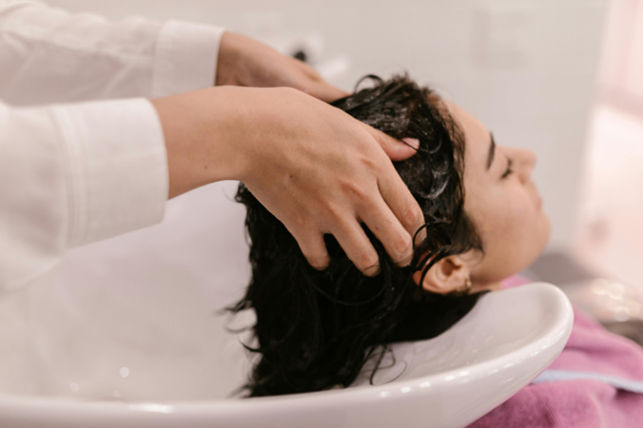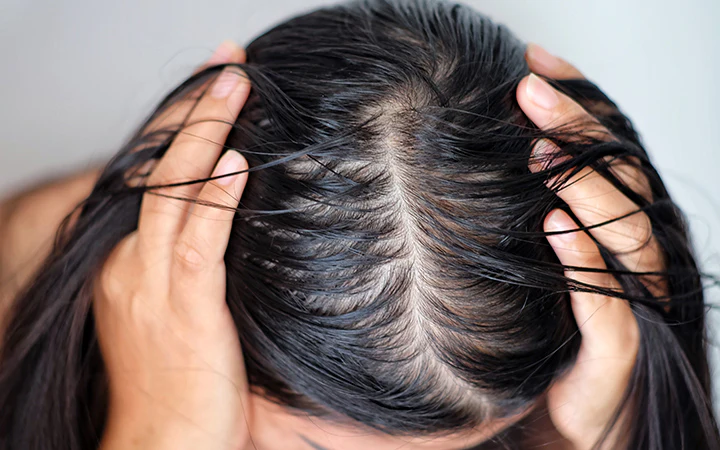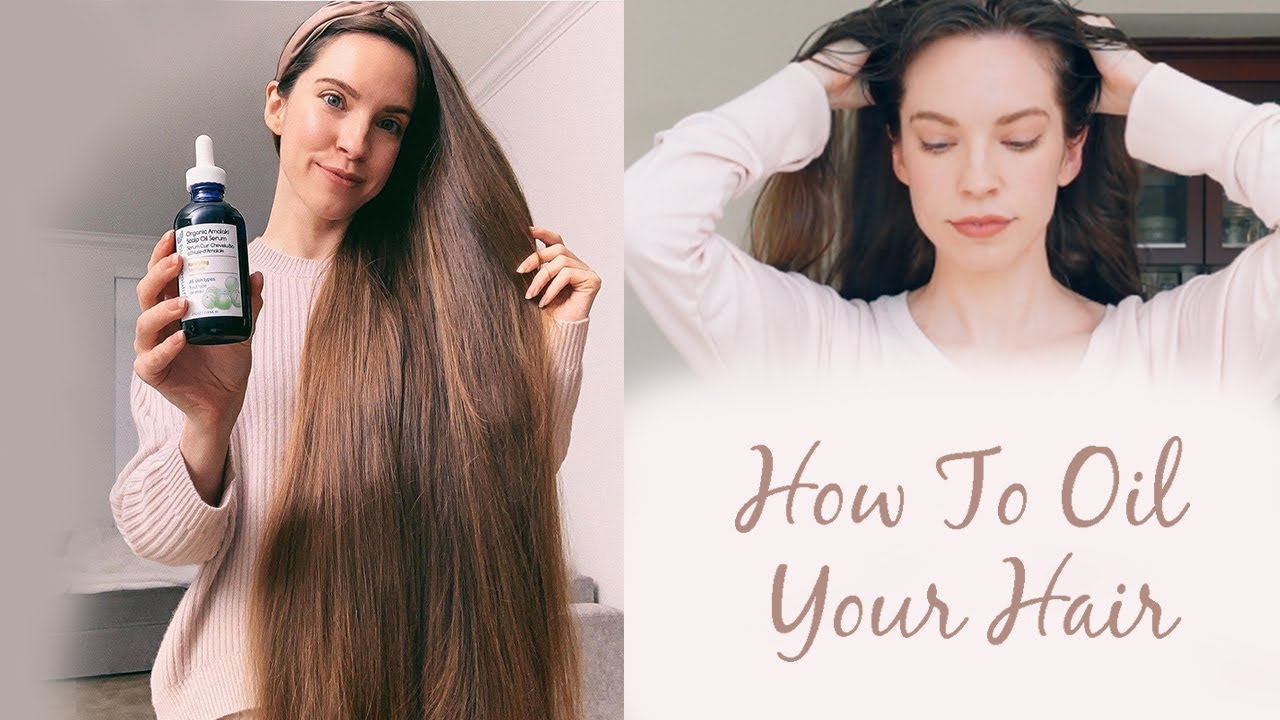Adding protein to your hair care routine is essential for maintaining strong, healthy locks. Hair is primarily made up of keratin, a type of protein that provides strength, structure, and resilience. Over time, exposure to chemical treatments, heat styling, and environmental factors can deplete the natural protein in your hair, leaving it brittle, limp, and prone to breakage. The good news? You can restore and strengthen your hair by adding protein through treatments and natural methods.
In this post, we’ll explore everything you need to know about protein for hair, how to identify if your hair is lacking protein, the types of proteins beneficial for hair, and both professional and natural ways to give your hair the boost it needs.
Why Does Hair Need Protein?
Your hair is composed of keratin, which is made from amino acids. This protein is responsible for maintaining the structure and health of your hair. Without enough protein, your strands can become weak, thin, and prone to damage. It’s important to note that once hair protein is damaged, it can’t be naturally restored. However, hair care products, like protein treatments, can coat and repair damaged areas by creating a temporary protective barrier.
Benefits of Protein for Hair:
- Restores strength and elasticity
- Reduces breakage and split ends
- Adds shine and smoothness
- Improves manageability and texture
How to Tell If Your Hair Needs Protein
Is your hair lacking protein or moisture? Here’s a simple test: take a strand of your hair and gently stretch it. If it stretches but doesn’t return to its normal shape or snaps easily, this is a sign that your hair needs more protein. If it feels dry and doesn’t stretch, your hair is likely in need of moisture.
Signs your hair needs protein:
- Limp, stringy, or gummy texture
- Hair stretches too much and snaps easily
- Increased hair fall or breakage
- Lack of bounce and volume
Types of Proteins That Benefit Hair
While you can’t replace the exact keratin protein your hair is made of, there are several types of proteins that mimic its structure and provide similar benefits. These proteins help fill gaps in damaged hair and restore strength:
- Keratin: The primary protein in hair that rebuilds and strengthens strands.
- Wheat Protein: Helps retain moisture and improve hair elasticity.
- Soy Protein: Adds volume and reduces frizz by reinforcing hair structure.
- Collagen: Boosts elasticity and helps maintain hair’s integrity.
- Amino Acids: The building blocks of protein that strengthen and nourish.
Look for these proteins in hair care products like shampoos, conditioners, leave-in treatments, and deep conditioners.
How to Add Protein to Your Hair Care Routine
- Deep Conditioning Protein Treatments
One of the best ways to infuse protein into your hair is by using deep conditioning protein treatments. These treatments penetrate your hair shaft to repair and strengthen strands from the inside out. Aim to use a protein mask or deep conditioner once a week to help repair damage and restore health.
A great product to try is the Shea Moisture Manuka Honey & Yogurt Protein Mask, which combines honey for moisture and yoghurt for protein-rich nourishment. This can revive damaged, brittle hair and improve elasticity.
- Leave-In Protein Treatments
For ongoing maintenance, try adding a leave-in conditioner that contains protein to your daily hair care routine. Leave-in treatments help protect your hair from breakage and environmental stressors while adding moisture and protein.
- Protein-Infused Shampoos and Conditioners
Incorporating a protein shampoo and conditioner can provide your hair with a regular, gentle dose of strengthening protein. This is especially helpful if your hair feels weak and prone to breakage. Alternate between your usual products and a protein-rich formula every few washes to maintain balance.
Consider using the OGX Extra Strength Hydrate and Repair Shampoo & Conditioner, which contains a blend of proteins and oils to nourish and repair damaged hair.
Natural Ways to Give Your Hair the Protein It Needs
In addition to using store-bought protein treatments, there are also several natural ways to give your hair the protein it needs. Here are some easy and effective methods you can try:
- Eat Protein-Rich Foods
A healthy diet plays a crucial role in hair health. Since your hair is made from protein, eating protein-rich foods can help strengthen your hair from within. Meat is an excellent source of protein, as well as zinc and iron, which promote healthy hair growth. Consider lean options like poultry, seafood, and eggs. If you follow a plant-based diet, you can get plenty of protein from sources like lentils, quinoa, nuts, kale, and whole grains.
- DIY Protein Hair Treatment
If you prefer a more natural approach, you can create a DIY protein treatment at home using ingredients from your kitchen. Here’s a simple recipe:
- 1 egg
- ½ avocado
- 1 tablespoon of Greek yogurt
- 1 tablespoon of honey
Mix these ingredients and apply them to freshly washed hair. Leave the treatment on for 30 minutes before rinsing thoroughly. This DIY mask strengthens hair strands, adds volume, and leaves your hair feeling soft and manageable.
- Give Yourself a Protein Scalp Massage
Massaging your scalp is a great way to improve circulation and boost hair growth. You can enhance this process by using protein-rich oils like sweet almond oil. Massage the oil into your scalp to nourish your hair follicles with protein while promoting relaxation.
- Try an Almond Milk Hair Rinse
Almonds are packed with protein, and you can harness their benefits by using almond milk as a hair rinse. Mix ½ cup of almond milk with 2 tablespoons of sweet almond oil, 1 teaspoon of lavender oil, and 1 tablespoon of castor oil. Warm this mixture slightly, pour it over your hair, and leave it on for an hour before rinsing with warm water. This treatment helps reduce breakage, soften strands, and promote hair strength.
- Use Coconut Oil (Unrefined)
While not typically rich in protein, unrefined coconut oil can help your hair retain its protein levels by sealing in moisture. Apply a small amount of unrefined coconut oil to damp hair and scalp, and let it sit for 20 minutes before washing it out. This helps protect your hair’s protein structure while adding softness and shine.
How to Avoid Protein Overload
While protein treatments are beneficial for your hair, overusing them can lead to protein overload. Protein overload occurs when too much protein causes hair to become stiff, brittle, and dry. To avoid this, balance your protein treatments with moisturizing products and always follow the instructions on the product label.
A good way to test for protein overload is to apply a protein treatment to your hair. If it still feels dry afterwards, you may be overdoing protein and need more moisture.
Final Thoughts
Adding protein to your hair care routine is key to keeping your hair strong, healthy, and full of life. Whether you choose store-bought products or natural methods, finding the right balance of protein and moisture will help you achieve shiny, resilient hair. Pay attention to the signals your hair gives you and adjust your routine accordingly for optimal results. Protein treatments, when used correctly, can transform dull, brittle hair into a nourished, vibrant mane.



